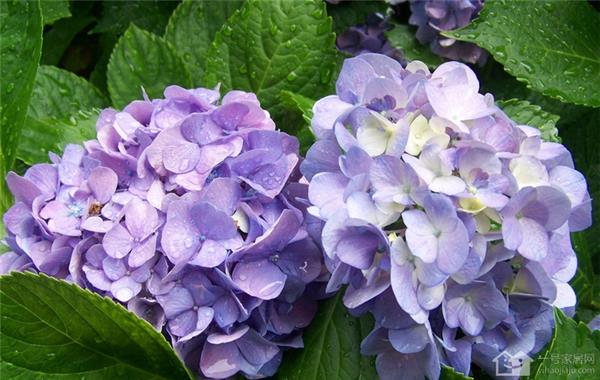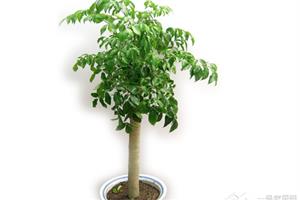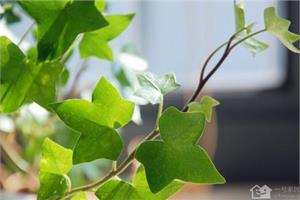Lovely flower cluster hydrangea culture
Hydrangea, also known as grass hydrangea, is a very ornamental plants, red, white, blue, pink and many other colors. Hydrangea flowers generally bloom in June-July, charming and moving, branches and leaves dense exhibition. Do you like this beautiful hydrangea flower? Let's introduce hydrangea cultivation in small series below!

Cultivated hydrangea
Hydrangea like fertilizer, growth period, generally every 15 days to apply a decomposed thin cake fertilizer water. In order to maintain the acidity of the soil, 1%-3% ferrous sulfate can be added to the fertilizer solution. Frequent irrigation alum fertilizer water, can make the plant branches multiply green; budding period added 1-2 times potassium dihydrogen phosphate, can make flowers big color; application cake fertilizer should avoid the hot days, so as not to incur diseases and insect pests and damage roots.
Hydrangea leaves hypertrophy, luxuriant branches and leaves, water demand more, in the growing season of spring, summer, autumn, to irrigate enough water to keep the pot soil often moist state. Summer weather is hot, evaporation is large, in addition to watering enough water, but also spray water to the leaves every day. Hydrangea root for fleshy roots, watering can not be excessive, bogey basin in the ponding, otherwise it will rot roots. After September, the weather gradually turns cold, so gradually reduce the amount of watering. Before the frost falls, move indoors, and the room temperature should be kept at about 4 degrees. Before entering the house, remove the leaves to avoid rotting. In winter, it is advisable to put the plants indoors in the sun, and it is advisable to leave the room after the rain in the second year. Hydrangea is an ideal potted flower that is relatively easy to manage and cultivate because of its extensive management and few pests.
Hydrangea likes semi-shady and humid environment, not very cold-resistant. Summer heat bogey direct sun, or leaves easy coke yellow, not suitable for excessive drying, good in humus-rich, moist, good drainage on the light loam. The branches and leaves are easy to wither and wither after frost. The ground part of open field cultivation dies in winter. The new shoots sprout from the rhizomes and bloom again in the following year. If they are potted in greenhouse for winter, they can remain evergreen.
Key points of conservation and management in four seasons
Spring: potted plants should trim dead branches and turn pots for soil to be served after the pot can be applied once or twice to nitrogen-based thin liquid fertilizer, can promote branch leaf germination.
Summer, autumn: should be placed in the shade or under the curtain, to prevent direct sun, avoid yellowing leaves scorched. Apply topdressing once or twice before and after flowering to promote green leaves and flowers. After the flower withers, the pedicel should be repaired in time to maintain a beautiful posture. Pot soil often keep moist, but to prevent water after the rain, in case hydrangea fleshy roots due to excessive moisture and decay.
Winter: After winter, the plants cultivated in the open field should be kept warm and safe for winter; potted plants can be placed in a warm place facing south and facing the sun without cold wind. Although dead leaves fall off in winter, the roots and branches still survive, and new leaves sprout in the following spring.

The above is the hydrangea culture introduced by Xiaobian. Have you learned it? Aquaculture hydrangea can enjoy such beautiful and moving flower clusters, but it is not easy to cultivate them in different seasons. I hope this article helped you.
- Prev

Propagation method of Happy Tree with good Environment, good feng shui and good intention
Propagation method of Happy Tree with good Environment, good feng shui and good intention
- Next

Pay attention to the warm and cold-resistant culture of ivy
Pay attention to the warm and cold-resistant culture of ivy
Related
- Wuhan Hospital Iron Tree Blooming Result Was Instantly Frightened by the Gardener Master
- Which variety of camellia is the most fragrant and best? Which one do you like best?
- What is the small blue coat, the breeding methods and matters needing attention of the succulent plant
- Dormancy time and maintenance management of succulent plants during dormancy
- Minas succulent how to raise, Minas succulent plant pictures
- What are the varieties of winter succulent plants
- How to raise succulent plants in twelve rolls? let's take a look at some experience of breeding twelve rolls.
- Attention should be paid to water control for succulent plants during dormant period (winter and summer)
- Watering experience of twelve rolls of succulent plants
- Techniques for fertilizing succulent plants. An article will let you know how to fertilize succulent plants.

